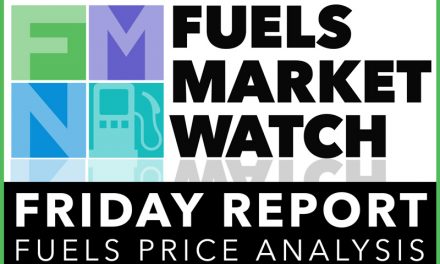Total petroleum deliveries in October moved up by 1.1 percent from October 2016 to average 19.9 million barrels per day. These were the highest October deliveries in 10 years, since 2007. Compared with September, total domestic petroleum deliveries, a measure of U.S. petroleum demand, decreased 1.8 percent. For year-to-date, total domestic petroleum deliveries moved up 1.2 percent compared to the same period last year.
“The economy continues to grow as fuel demand remains strong and more people find work,” said API Director of Statistics Hazem Arafa. “Unemployment went down last month and gas prices remain relatively low benefiting American businesses and workers.”
Gasoline production was up from the prior month, but was down from the prior year and the prior year-to-date. In October, gasoline production reached the second highest output for the month of October, up 3.5 percent from the prior month, but down 0.2 percent from the prior year to average 10.0 million barrels per day in October. For year-to-date, gasoline production decreased 1.5 percent compared to the same period last year and was the second highest year-to-date on record. Distillate production in October reached the highest production level for the month of October at just below 5.0 million barrels per day. This was up 9.7 percent from the prior month, up 7.4 percent from the prior year, and up 3.0 percent from the prior year-to-date. Distillate production year to date 2017 was the second highest year to date on record. Kerosene-jet production averaged nearly 1.6 million barrels per day in October, reaching the second highest output in October since 2000.
U.S. crude oil production in October remained strong and above 9.0 million barrels per day for the ninth consecutive month. Domestic crude oil production increased 7.0 percent from the prior year and reached the highest October output in 45 years, since 1972, to average 9.4 million barrels per day in October. Compared with the prior month and the prior year to date, crude oil production decreased 1.1 percent and increased 3.3 percent, respectively. The month-ago declines in crude oil production likely reflected the impact of Hurricane Nate.
U.S. total petroleum imports decreased 5.4 percent from September and decreased 0.8 percent from October 2016 to average just above 9.6 million barrels per day in October. These were the lowest imports since November 2015. For year-to-date, total petroleum imports were up 1.6 percent compared with year-to-date 2016. Crude oil imports decreased 3.6 percent from October 2016 to 7.3 million barrels per day in October. These were the third lowest imports for the month of October in 21 years, since 1996. Compared with September, crude oil imports were 2.1 percent lower. For year-to-date, crude imports were up 2.2 percent compared with year-to-date 2016.
API is the only national trade association representing all facets of the oil and natural gas industry.









